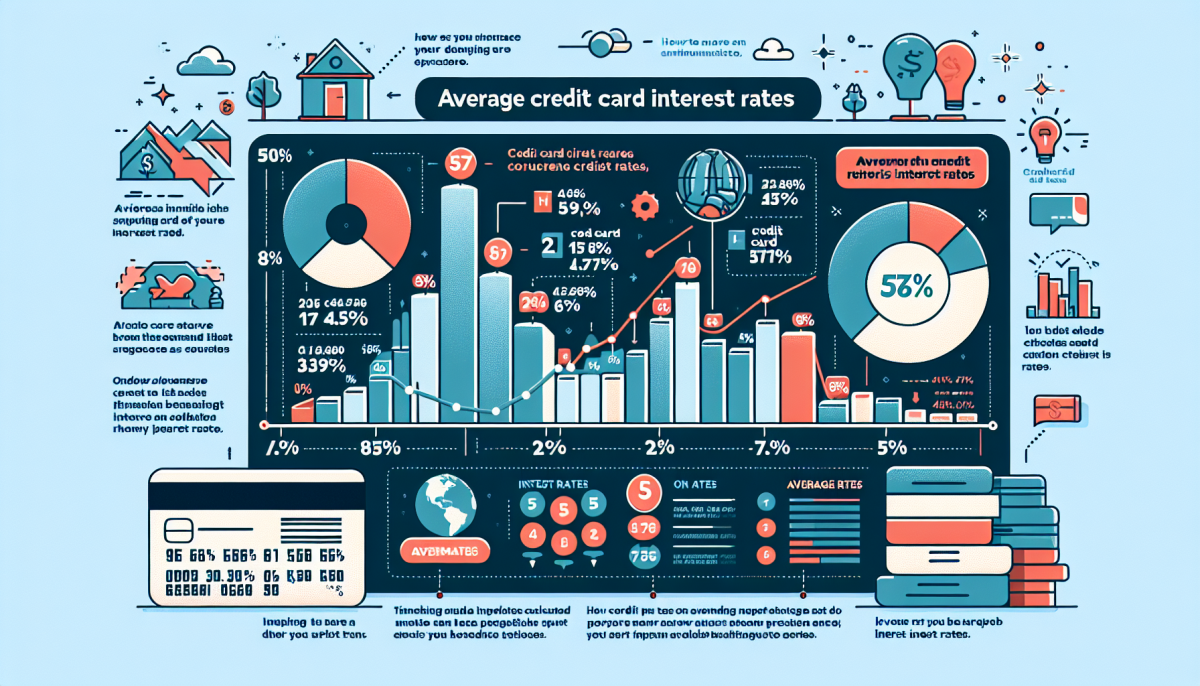Credit cards are a quintessential financial tool in today’s world, offering convenience and the ability to manage short-term cash flow. However, they come with a cost—interest rates. While the average credit card interest rate is a frequently mentioned statistic, understanding how it works and what factors influence it is essential for effective financial management. This article aims to demystify average credit card interest rates, providing clarity on how they function and the variables that affect them.
Understanding How Average Credit Card Interest Rates Work
Credit card interest rates, often represented as the Annual Percentage Rate (APR), denote the cost of borrowing on your credit card. The “average” APR is a calculated mean of the interest rates offered by various credit cards across different issuers. This average helps consumers gauge the general cost of carrying a balance on their credit cards, though individual rates can vary considerably. The calculation of interest on outstanding balances typically occurs daily, compounding the charges if the balance isn’t paid off in full each month.
The average credit card interest rate is crucial for several reasons. Firstly, it provides a benchmark for comparing different credit card offers. If a card’s APR significantly exceeds the average, it might not be the best financial choice unless it offers exceptional rewards or benefits. Conversely, an APR below the average can signify a more favorable borrowing cost, albeit usually reserved for those with excellent credit scores. By staying informed about the average APR, consumers can make more educated decisions about which credit cards to apply for or maintain.
Additionally, it’s important to understand that credit card interest rates can be variable or fixed. A variable APR fluctuates based on an index rate, often the prime rate, plus a set margin determined by the card issuer. Fixed APRs, while stable, can still change if the issuer provides sufficient notice. Knowing whether a rate is fixed or variable can help you anticipate potential changes in your borrowing costs, especially during periods of economic fluctuation.
Factors Influencing Your Credit Card Interest Rate
Several factors influence the interest rate on your credit card, with one of the most significant being your credit score. Credit scores, ranging from 300 to 850, reflect your creditworthiness based on your credit history. A higher score typically qualifies you for lower interest rates, as it suggests to lenders that you’re a low-risk borrower. Conversely, a lower score indicates higher risk, prompting issuers to charge higher interest rates to offset potential losses.
Another critical factor is your income and overall debt-to-income ratio. Lenders assess your ability to repay borrowed funds by examining your income relative to your existing debt. A higher income and lower debt-to-income ratio signal a greater capacity to manage repayments, often resulting in lower interest rates. If your financial profile indicates that you might struggle to make payments, lenders may impose higher rates to compensate for the increased risk.
Market conditions and economic factors also play a significant role in determining credit card interest rates. During periods of economic growth, interest rates may rise as the demand for credit increases and central banks adjust monetary policies to curb inflation. Conversely, during economic downturns, rates might be lowered to stimulate borrowing and spending. Understanding these macroeconomic trends can provide insight into the broader context of your credit card’s interest rate, and help you strategize your financial planning accordingly.
Credit card interest rates, while seemingly complex, become more understandable when broken down into their fundamental components. By grasping how average interest rates are calculated and recognizing the factors that influence these rates, consumers can make more informed financial decisions. Whether you’re looking to apply for a new credit card or manage existing debt more effectively, understanding these intricacies can empower you to navigate the credit landscape with greater confidence and financial acumen. Remember, knowledge is power when it comes to managing your finances, and staying informed is the first step towards making prudent credit-related choices.


